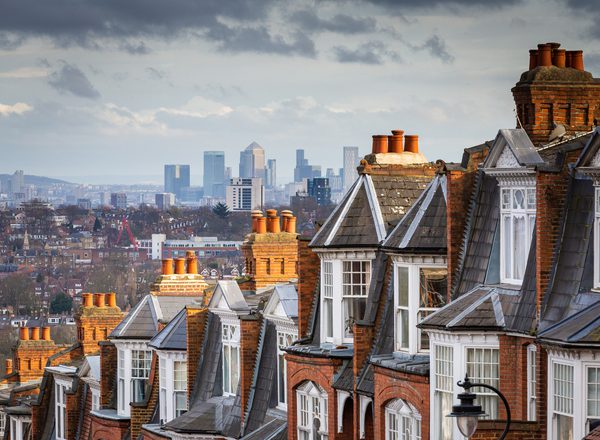
Towards a fair and proportional property tax
Article
Given continued fiscal pressures, the chancellor will have to raise taxes in the autumn budget. Attention is on Britain’s property taxes for good reason: housing is one of the biggest challenges facing the country and the current property tax system is one of the most unfair.
This blog sets out a package of reforms the chancellor can feasibly implement at the autumn budget, alongside a call for a moving towards a proportional property tax by the end of this parliament. We recommend the following.
- Raise rates on higher council tax bands: Increase rates by 50 per cent for bands F-G and double the rate for the existing H band. Together these reforms would raise just under £4 billion.
- Lower rates on lower council tax bands, with £1 billion recycled to cut bills for households in bands A-D by 2.7 per cent, making council tax less regressive.
- Raise the foreign buyer surcharge: Increase the surcharge from 2 per cent to 6 per cent, raising around £120 million, ensuring overseas investors contribute more fairly to local communities.
Together, these proposals could raise around £3 billion while making the system fairer and driving growth by making the system more proportional to market values.
The government should, at the same time, announce a complete revaluation by end of parliament and enable the move to a proportional property tax. This is ambitious but achievable with political will.
The current UK property tax system is unfair and distortionary
Britain’s property tax system is both unfair and distortionary. Council tax is unfair not just because it uses 1991 property values, but because of the way the tax is structured. The bands rise too slowly with property value, so people in modest homes end up paying bills that are a higher share of their home’s value than owners of very expensive properties. Stamp duty land tax (SDLT) distorts the market by discouraging people from moving when their needs change.
Families in modest homes often shoulder a higher burden than owners of luxury properties
Families in modest homes often shoulder a higher burden than owners of luxury properties, while those benefiting most from rising land values contribute the least. A fairer approach would ensure that those benefiting from growing property wealth help to support thriving places and a stronger economy. Reform should not be limited to raising revenue: it should also work towards a tax system that can steer the economy by embodying fairness, opportunity, and shared prosperity.
The case for a proportional property tax
A range of options for delivering a fairer system of property taxation exist. In 2021, IPPR put forward a case study of replacing council tax and SDLT with a proportional property tax (PPT), levied annually on up-to-date property values. The reforms outlined would cut bills for three in four households, free up an estimated 600,000 homes within five years, and add £3 billion to GDP in 2019 values through greater housing market activity.
The idea of a PPT is popular across the political spectrum, with only small differences in the proposed rates and structures. Onward proposes a split model, with a local PPT on property up to £500,000 and a national levy above that, ensuring councils retain their own revenue. Fairer Share advocates a flat 0.48 per cent rate with a higher charge on second, empty, and overseas-owned homes, alongside safeguards like caps and payment deferrals. Together, these proposals show broad consensus: PPT can link tax directly to wealth, promote efficient use of housing, and provide stable revenue for both local and national government.
Starting the reform agenda towards fairer property taxation
A full revaluation of council tax should be completed within this parliament. While the politics are challenging, they are far from impossible and work on PPT has shown it commands support across the political spectrum. With clear leadership and commitment from the top, legislation could be introduced swiftly, supported by a strong implementation plan and transitional arrangements. Expert advice suggests that revaluation can be achieved under existing legislation, meaning it could be passed quickly if the government chooses to act [1]. Most revaluation work today is done using robust statistical modelling rather than on the ground inspections, and there is valuable experience to draw from the work undertaken by the Valuation Office Agency in Wales. This makes revaluation not only desirable but deliverable, allowing ministers to leave a lasting legacy by paving the way for a proportional property tax by the end of this parliament.
Raise rates on higher council tax bands as an interim step
While revaluation is underway, the government should take immediate steps to make council tax fairer while raising revenue. Higher-value properties currently pay too little, white lower-value homes pay disproportionately more.
The prospect of the majority of households’ bills falling further could help provide momentum for reform
Increasing rates on bands F-H would help correct current distortions, raising almost £4 billion. Part of this revenue, around £1 billion, can be used to provide rebates for households in lower-value homes (see technical appendix). While a modest first step, it would show households the benefits of full-fledged council tax reform. The prospect of the majority of households’ bills falling further could help provide momentum for reform.
Though an interim measure, it would make the system less regressive and begin to align payments more closely with property value.
- Scale of reform: A 50 per cent rise in bands F-G and a 100 per cent rise in band H would raise around £3.9 billion. These bands cover homes worth over £120,000 in 1991 values (typically over £600,000 today) and roughly the top 10 per cent of properties.
- Regional impact: The rises would fall mainly in London and the South East, where property prices have grown fastest. This can be framed as asking areas that have gained most from housing wealth to contribute more.
- Safeguards: Support should be available for asset-rich but cash-poor households and tenants in high-value homes, with options to defer or smooth payments. Around 1 per cent of homes in bands F-H are likely to be in higher bands than their true value justifies. Councils should be given the resources to manage what we estimate to be 10,000 rebanding requests that could arise because of these changes.
- Fiscal balance: Because council tax revenue is local, government could adjust grant allocations through the Local Government Finance Settlement to maintain balance within existing spending totals.
These reforms would make council tax fairer in the short term while paving the way for full revaluation and a proportional property tax.
Raise the non-UK resident surcharge on stamp duty
At present, the UK applies a 2 per cent stamp duty surcharge on non-resident buyers. There is scope to expand this policy as a visible and popular reform that would promote fairness and address the issue of non-resident investment driving up prices for domestic buyers. It could be framed as an anti-speculation tax, ensuring overseas investors contribute more to local communities. International examples show the effectiveness of such measures, with Canada for instance levying a 20 per cent tax on non-resident buyers in British Columbia.
Overseas buyers using homes as a store of value contribute little to the economy but drive up house prices
The evidence from Canada shows that these measures reduced prices in areas with high levels of foreign investment, easing access for first-time buyers and moderating demand at the top end of the market. Their popularity reflects a sense of fairness, since overseas buyers using homes as a store of value contribute little to the economy but drive up house prices.
Since its introduction in 2021, the UK surcharge has raised £640 million, though around £120 million has been refunded to overseas purchasers who later became UK residents. Increasing the surcharge from 2 to 6 per cent could raise around £100 million. While the revenue gain is modest, the measure would be a salient part of the autumn budget, making the tax system fairer in a simple and easy to explain way.
The autumn budget can be a start towards fairer property taxation
In the short term, these measures would raise about £3 billion in the autumn budget, while beginning to correct some of the worst distortions in the current system. Raising council tax rates on higher bands and increasing the foreign buyer surcharge would all make property taxation fairer, ensuring that those who have benefited most from housing wealth contribute more. These are practical, deliverable reforms that could be implemented immediately to raise revenue and support first-time buyers.
Beyond this budget, completing a full revaluation and moving towards a proportional property tax by the end of this parliament would deliver lasting change. Replacing outdated 1991 valuations with a system that reflects today’s housing market would modernise property taxation for the first time in a generation. Together, these steps would create a fairer, more efficient system that supports growth, improves housing affordability, and leaves a legacy of reform that endures.
1. The Council Tax (New Valuations for England) Act 2006 gave the secretary of state the power to decide when any revaluations would take place, and to do that via secondary legislation (subject to affirmative procedure).
Downloads List
Related items

Rule of the market: How to lower UK borrowing costs
The UK is paying a premium on its borrowing costs that ‘economic fundamentals’, such as the sustainability of its public finances, cannot fully explain.
Rachael Henry discussing the Budget on GB News

Fairness first: How the budget can make life better and the economy stronger
The chancellor faces a daunting task at the upcoming budget. A fiscal gap sets the stage, putting the chancellor in the unenviable position of having to raise taxes.